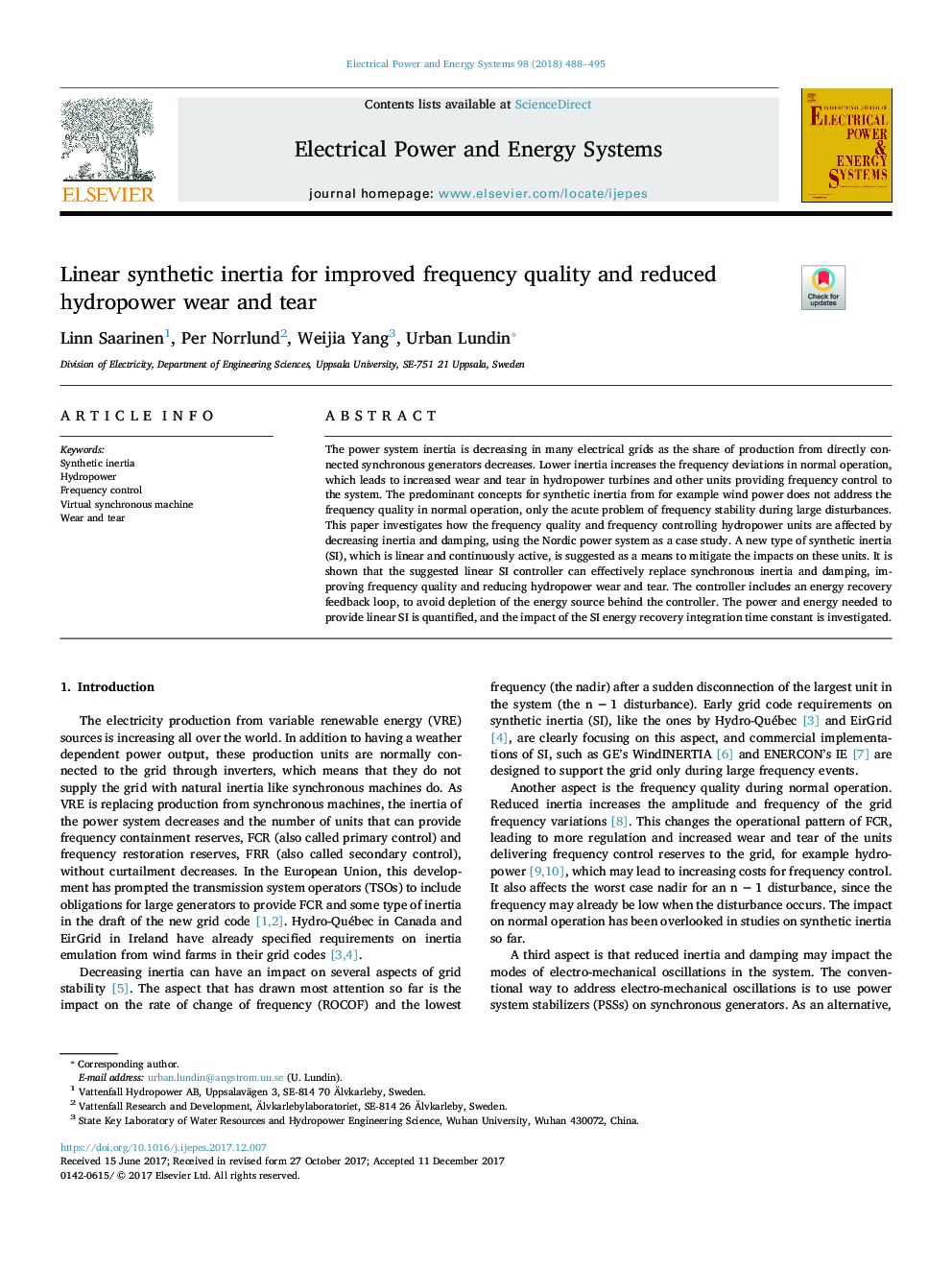| Article ID | Journal | Published Year | Pages | File Type |
|---|---|---|---|---|
| 6859444 | International Journal of Electrical Power & Energy Systems | 2018 | 8 Pages |
Abstract
The power system inertia is decreasing in many electrical grids as the share of production from directly connected synchronous generators decreases. Lower inertia increases the frequency deviations in normal operation, which leads to increased wear and tear in hydropower turbines and other units providing frequency control to the system. The predominant concepts for synthetic inertia from for example wind power does not address the frequency quality in normal operation, only the acute problem of frequency stability during large disturbances. This paper investigates how the frequency quality and frequency controlling hydropower units are affected by decreasing inertia and damping, using the Nordic power system as a case study. A new type of synthetic inertia (SI), which is linear and continuously active, is suggested as a means to mitigate the impacts on these units. It is shown that the suggested linear SI controller can effectively replace synchronous inertia and damping, improving frequency quality and reducing hydropower wear and tear. The controller includes an energy recovery feedback loop, to avoid depletion of the energy source behind the controller. The power and energy needed to provide linear SI is quantified, and the impact of the SI energy recovery integration time constant is investigated.
Related Topics
Physical Sciences and Engineering
Computer Science
Artificial Intelligence
Authors
Linn Saarinen, Per Norrlund, Weijia Yang, Urban Lundin,
